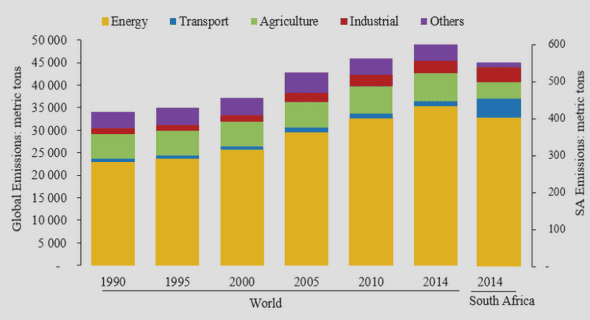(Downloads - 0)
For more info about our services contact : help@bestpfe.com
Table of contents
1 Introduction
1.1 Model selection via penalization
1.1.1 Model selection strategy
1.1.2 Efficiency and consistency
1.1.3 Complexity of the collection of models
1.2 Resampling and cross-validation
1.2.1 Risk estimation
1.2.2 Choice of p
1.2.3 Closed-form expressions
1.3 Optimal risk estimation
1.3.1 Bias-variance tradeoff
1.3.2 Multiple testing
1.4 Leave-p-out risk estimator as a penalized criterion
1.4.1 Random penalty
1.4.2 Oracle inequality and adaptivity
1.5 Change-points detection
2 Model selection
2.1 Model selection set-up
2.1.1 The model choice
2.1.2 Model collection
2.1.3 Estimation and selection
2.2 Several strategies of model selection
2.2.1 Model selection via penalization
2.2.2 Statistical tests
2.2.3 Bayes factor and posterior predictive loss
2.2.4 Model selection and multiple testing
2.3 Aggregation as an alternative to model selection
2.3.1 Aggregation for adaptation
2.3.2 Aggregation for improvement
3 Cross-validation
3.1 CV and resampling
3.1.1 Historical viewpoint
3.1.2 Resampling
3.2 What is CV?
3.2.1 CV heuristics
3.2.2 How to split the data?
3.3 Closed-form expressions
3.3.1 Preliminary calculations
3.3.2 Closed-form Lpo estimators
3.4 CV and penalized criteria
3.4.1 Moment calculations
3.4.2 CV as a random penalty
3.5 Proofs
3.5.1 Closed-form Lpo estimator
3.5.2 Moments calculations
3.5.3 Lpo penalty
4 Optimal risk estimation via cross-validation in density estimation
4.1 Abstract
4.2 Introduction
4.3 Closed-form expressions for the Lpo risk estimator
4.3.1 Framework
4.3.2 Cross-validation estimators
4.3.3 Explicit expression for the Lpo risk estimator
4.3.4 Closed formula of the bias and the variance for histograms
4.4 Reliability of estimators
4.4.1 Exact calculation of the gap between variances of Lpo and V-fold estimators
4.4.2 Choice of the parameter p
4.4.3 Adaptive selection procedure for histograms
4.5 Simulations and discussion
4.5.1 Influence of V on the choice of the optimal bandwidth
4.5.2 Density estimation by regular histogram
4.5.3 Multiple testing context and non-regular histograms
4.5.4 Density estimation by irregular histograms
4.5.5 Discussion
4.6 Appendix
4.6.1 Sketch of proof of Theorem 4.3.2
4.6.2 Proof of Proposition 4.3.1
4.6.3 Proof of Proposition 4.3.2
4.6.4 Proof of proposition 4.3.3
4.6.5 Sketch of proof of Proposition 4.4.1
4.6.6 Proof of theorem 4.4.1
5 Multiple testing
5.1 Abstract
5.2 Introduction
5.3 Estimation of the proportion of true null hypotheses
5.3.1 Mixture model
5.3.2 A leave-p-out based density estimator
5.3.3 Estimation procedure of π0
5.4 Asymptotic results
5.4.1 Pointwise convergence of LPO risk estimator
5.4.2 Consistency of bπ0
5.4.3 Asymptotic optimality of the plug-in MTP
5.5 Simulations and Discussion
5.5.1 Comparison in the usual framework (μ = 1)
5.5.2 Comparison in the U-shape case
5.5.3 Power
5.5.4 Discussion
5.6 Appendix
6 Model selection by cross-validation in density estimation
6.1 Introduction
6.2 Polynomial complexity
6.2.1 Overpenalization of the Lpo risk
6.2.2 Oracle inequality
6.2.3 Adaptivity result
6.3 Exponential complexity
6.3.1 Limitations of the CV approach
6.3.2 Oracle inequality
6.4 Proofs
6.4.1 Polynomial complexity
6.4.2 Exponential complexity
6.5 p as a regularization parameter
6.5.1 Overfitting in the polynomial framework
6.5.2 Simulations
6.6 Two-step algorithm
6.6.1 Description
6.6.2 Simulations
6.7 Discussion
7 Change-points detection via resampling
7.1 Introduction
7.2 Overview of the problem
7.2.1 Model selection view on change-points detection
7.2.2 Purpose and strategy
7.2.3 Non-asymptotic results
7.2.4 Overview of simulations
7.3 Resampling to take into account collection complexity
7.3.1 Theoretical considerations
7.3.2 Simulations
7.4 Resampling to choose the best model for each dimension
7.4.1 Theoretical considerations
7.4.2 Simulation setting
7.4.3 Study of the first step
7.4.4 Performances of 1*2VF
7.5 Open problems about complexity measures
7.6 Application to CGH microarray data
7.6.1 Biological context
7.6.2 Comparison with other algorithms
7.6.3 Results
7.7 Conclusion
7.7.1 Main results
7.7.2 Prospects
7.8 Appendix
7.8.1 Complexity measure
7.8.2 Best model choice for each dimension




